Excerpts from Jim Conrad's
Naturalist Newsletter
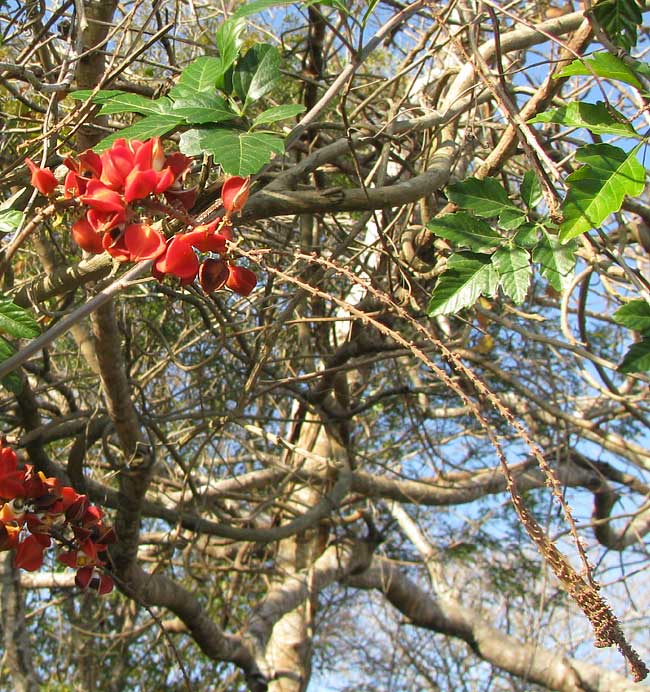
from the March 21, 2010 Newsletter issued from Hacienda Chichen Resort beside Chichén Itzá Ruins, central Yucatán, MÉXICO; limestone bedrock, elevation ~39m (~128ft), ~N20.676°, ~W88.569°
MOLDY BREAD AND CHEESE
For awhile a certain woody vine climbing high into trees has been catching my eye with its hand-size clusters of brightly red fruits. The fruits had always been too high for me to take a look at, though, until this week when I hiked to Pisté to buy fruit, and noticed a low vine in the scrub along the road. You can see the cluster of red, three-winged, half-inch wide (13 mm) fruits at the base of a long, brown rachis that earlier must have born male flowers above.
Note how the rachises thicken and flatten at their tips. In this genus rachises usually bear tendrils, so I don't know what's going on here. A fruit close-up is below:
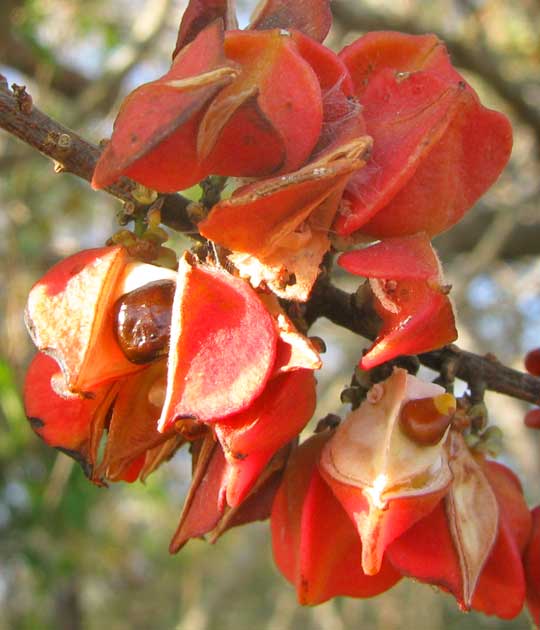
There you can see how the fruits split to reveal flattish, shiny brown seeds with large, pale arils at their bases, an aril in this case being a pulpy covering arising from the umbilicus-like connection of the seed with its pod. Some seed-types have them, most don't.
The vine is PAULLINIA FUSCESCENS, a member of the large but mostly tropical Soapberry Family, the Sapindaceae. In that family we also find Balloon-Vines, Goldenrain-Trees and Litchi trees. Unaccountably, in English our vine often is referred to as Moldy Bread and Cheese, the genus Paullinia being thought of as the Bread and Cheese genus.
You can see one of the vine's twice-compound leaves below:
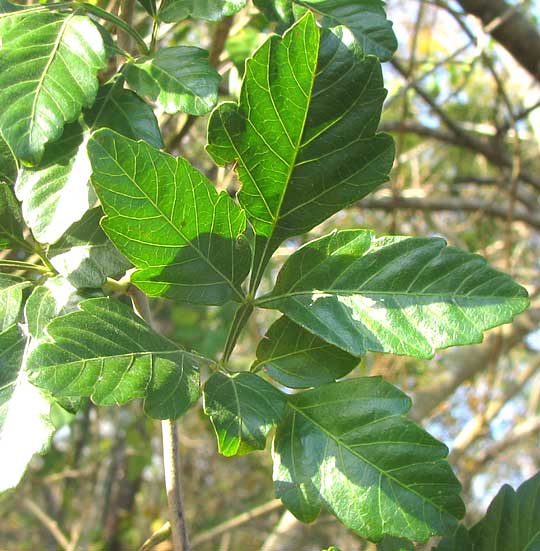
If you encounter such leaves on a woody vine in the tropics, you need to think "Soapberry Family," for lots of woody vines in that family bear such leaves. A while back we looked at a prettily flowering Serjania, at www.backyardnature.net/yucatan/serjana.htm.
On that page you can see a doubly compound leaf almost but not quite identical to our Paullinia's. Several vines in this family bear such leaves, but the fruits can be very different. The flowers often are so tiny that you need magnification to see the details.
This species is distributed from Mexico through Central America into northern South America. The stems are tough and pliable enough to serve as rope for anyone wanting to bind a few sticks of firewood together.
from the January 31, 2016 Newsletter issued from Hacienda Chichen Resort beside Chichén Itzá Ruins, central Yucatán MÉXICO
MOLDY BREAD & CHEESE, IMMATURE FRUIT
Moldy Bread & Cheese is fruiting again, but now I see that the fruits have a different look when young. You can see a branch of them below:
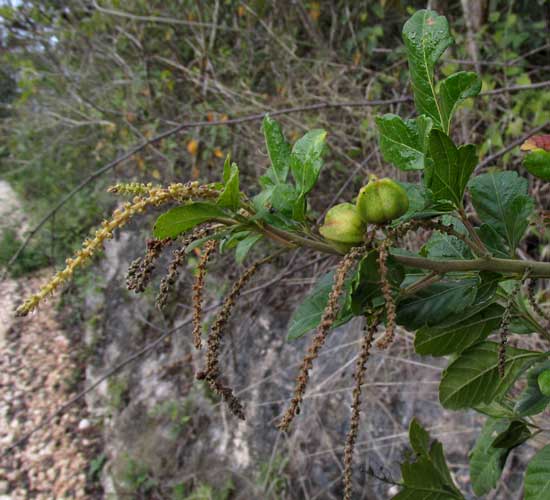
Here they are up closer:
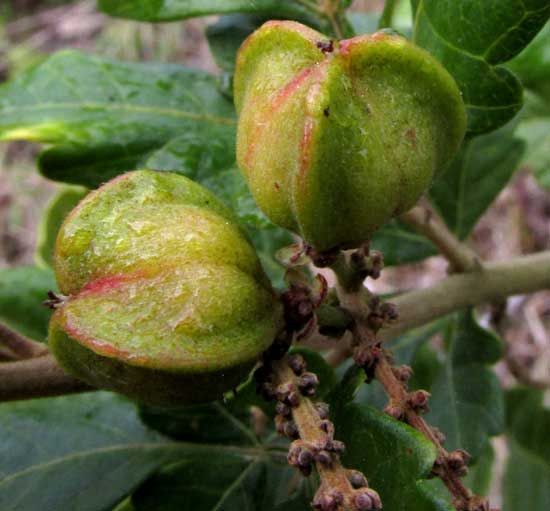
The vine's distinctive, twice-pinnately compound leaf is shown below:
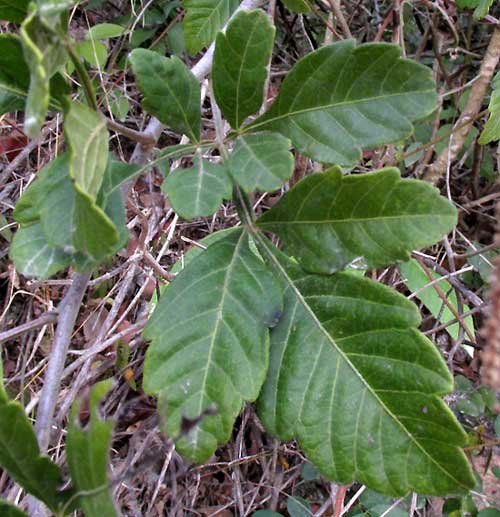
In our area the main plant families producing fruits with three carpels are the Euphorbia, Soapberry and Buckthorn Families -- the Euphorbiaceae, Sapindaceae and Rhamnaceae -- and knowing that helped figure out the vine's identity.
from the January 25, 2019 Newsletter issued from Rancho Regensis north of Valladolid, Yucatán, MÉXICO;
elevation ~40m (~130 ft), N~20.876°, W~88.170°
FLOWERING MOLDY BREAD & CHEESE
Draping a Wild Tamarind tree beside the entry road to Ek Balam a woody vine bore several long, slender flowering heads, as shown below:
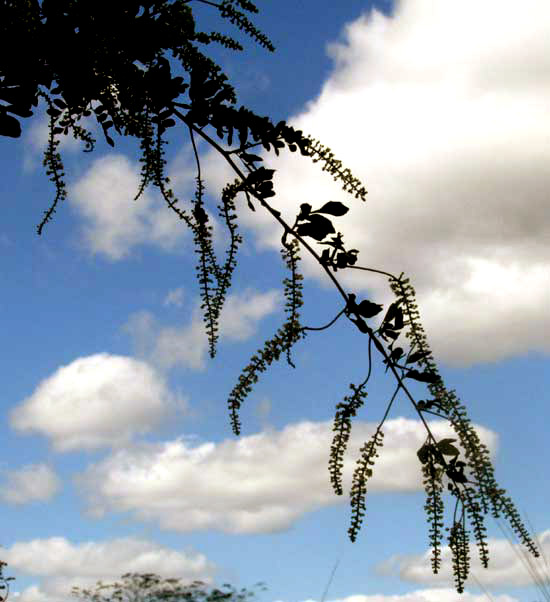
Though I'd not noticed before such flowering heads on a vine, the vine's twice-compound leaves looked very familiar, shown below:
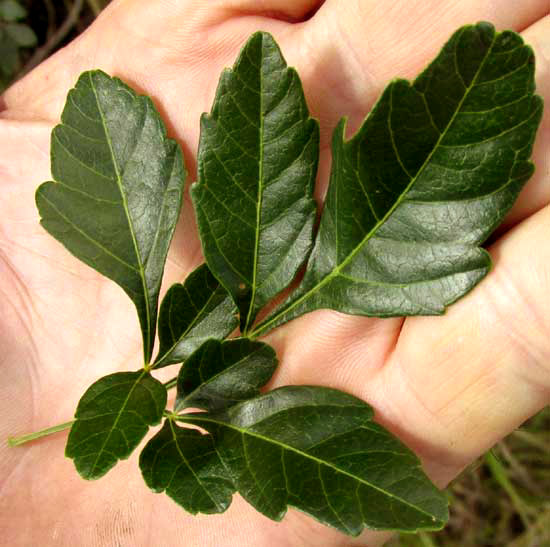
That leaf's general pattern of division into leaflets and subleaflets is typical of viny members of the often-climbing, mostly tropical and subtropical Soapberry Family, the Sapindaceae, of which we've admired a number of species here. But somehow until now I've missed seeing such flowering heads as these. A closer look at some of the spike-like racemes is shown below:
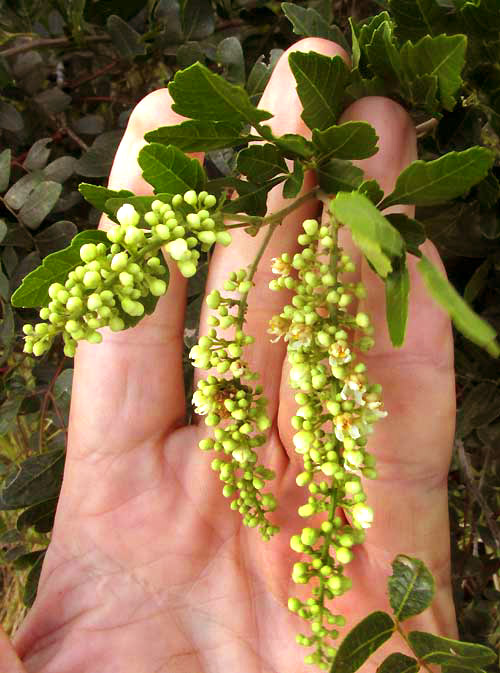
And a couple of open flowers are seen close-up below:
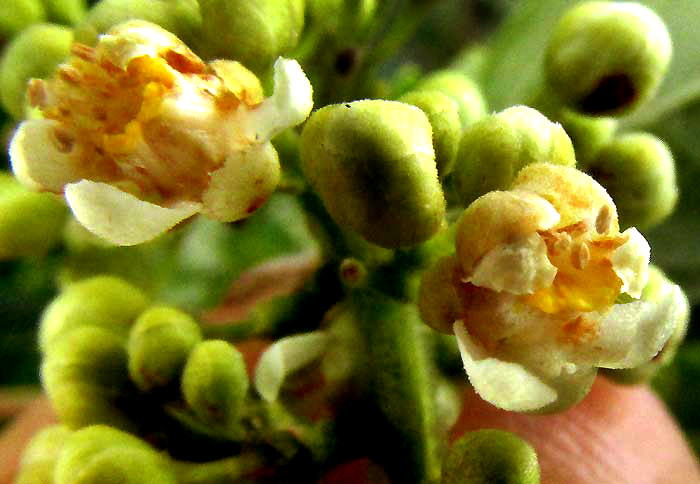
There you can see that the blossoms are slightly asymmetrical, with some petals larger than others, and some of the eight stamens longer than others, features often found in the Soapberry Family. Each flower bears four petals and each white petal bears a stalked gland with a conspicuous yellow, knobby top
It turns out that this woody vine produces fruits much more spectacular than its flowers, so until now I've documented the fruits but not the flowers. Earlier we found the inexplicable English name for the species to be Moldy Bread & Cheese. It's Paullinia fuscescens.